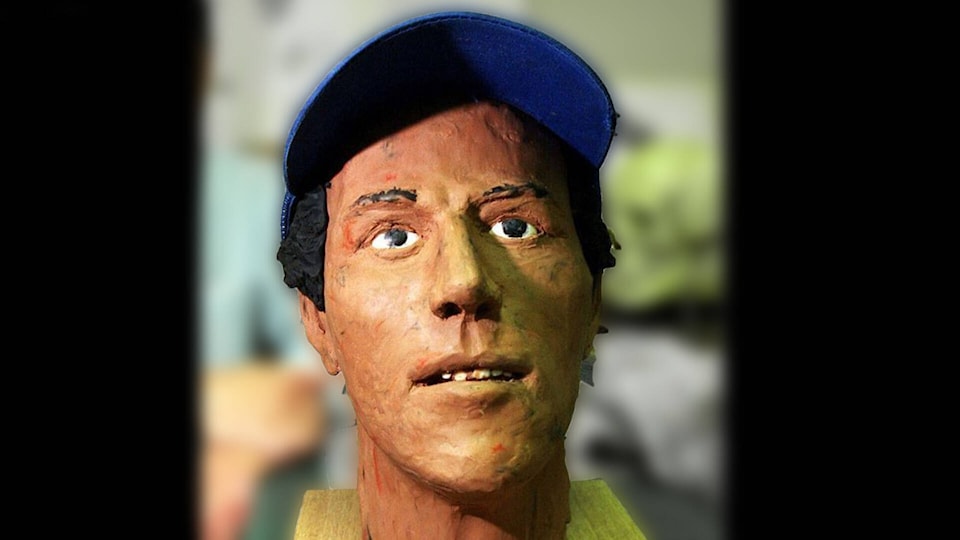Editor’s note: Some details in the following story may be disturbing to some readers.
In April of 1977, near Tofield, Alta., a grizzly discovery was made.
An unnamed adult male, who became known as “Septic Tank Sam,” was found in a septic tank on an abandoned farm near the community.
The badly decomposed body was found wrapped in a bed sheet and tied with a nylon rope.
Lime had been placed on the body to aid the decomposition process.
At the time he was found, “Sam” was believed to be between 26 and 32 years old, and was wearing blue jeans, a blue Levi shirt, grey work socks, and imitation Wallybee shoes.
“Sam” had been shot in the chest, twice, with a .32 calibre weapon.
For 44 years the identify of “Sam” remained a mystery, but now, thanks to changing technologies and a specialized unit within the Alberta RCMP who kept working the case, he now has a name.
The Alberta RCMP Historical Homicide Unit (HHU) operates under the province’s Serious Crimes Branch (SCB) to “review, assess, prioritize, and investigate historical homicides in RCMP jurisdiction.”
“The HHU is responsible for the investigation of unsolved homicides within Alberta by making use of advanced and complex investigative techniques,” stated a recent RCMP media release.
The specialized unit was created after a need was identified to create a homicide unit that could tackle unsolved and suspicious missing person cases, as well as long-term unsolved homicides.
Formed in 2007, the unit began with three RCMP members; however, when Project Kare — a long-term Edmonton-area project focused on missing high-risk females — was dissolved, some of the personnel were transferred to the new unit.
Currently comprised of 10 RCMP members and one civilian analyst, the HHU focuses on unsolved cases that could be “months, years, or even decades” old which were first investigated by the RCMP Major Crimes Unit.
Due to the large number of unsolved cases, not all cases are assigned to the HHU, but instead the unit is assigned cases of which there is the “highest probability of prosecution.”
“Septic Tank Sam” is one of those cases, and while the case remains unsolved the unit has made definite progress with it, as have other investigators over the years.
After the body was found in 1977, a forensic artist created a clay reconstruction of the skull, which was hoped to help aid in the identification of “Sam,” to no avail.
In 1986, the case of “Sam” was featured on an episode of Unsolved Mysteries, reigniting interest in the case.
Around the same time dentists across canada began comparing “Sam’s” teeth to available dental records, again with no luck in identifying his real name.
After the interest sparked in 1986 the case again went dormant, this time until the dawn of the new millennia.
It was not until the advent of genetic testing, and after it became commercially viable, that real progress was made in the identification of “Sam.”
In 2012, some of “Sam’s” hair was sent for testing by the RCMP, however no results were returned.
A new initiative in 2017 by the RCMP Missing Persons Unit was a turning point in the case.
A national DNA program was launched which allowed investigators to obtain DNA from people who had missing family members, allowing for the possibility of a potential match to be found.
The partial DNA profile that was put together in 2012 from the hair sample was run again in 2019 against this new new DNA database, again with no matches found.
It wasn’t until the emerging field of genetic genealogy became more widespread that a break in the case developed.
In 2020 genetic samples were sent to a laboratory in Texas where analysts were able to pull together a full profile of the victim, which was then searched against public DNA data banks.
Identifying possible relatives, investigators continued their work, and through the confirmation of familial DNA were able to positively connect the remains of “Septic Tank Sam” with his real name.
The Tofield RCMP hosted a virtual press conference in June of 2021 where they identified the victim as Gordon Edwin Sanderson.
Sanderson was estimated to be around 25 at the time of his death.
Now that the HHU has figured out who was found in that septic tank so long ago, they are trying to figure out how he ended up there.
Anyone with information is asked to contact the Tofield RCMP at 780-662-3353, or your local RCMP detachment.
Alternatively, members of the public can call Crime Stoppers anonymously at 1-800-222-8477, or by the P3 tips app available on Google and Apple download stores.
“Homicide investigations are among the most complex and resource intense operations undertaken by law enforcement,” said S/Sgt. Jason Zazulak of the HHU and Missing Persons Unit.
“There are over 200 unsolved homicides and 100 long-term missing persons’ cases in RCMP jurisdiction in Alberta. This is why it is crucial that the HHU remain committed to its work in finding answers to serious, unsolved crimes and ultimately bring them before the courts.”
See the story online at www.stettlerindependent.com for a link to the full history of the “Septic Tank Sam” case.
For a full history of the “Septic Tank Sam” case, follow this link.

